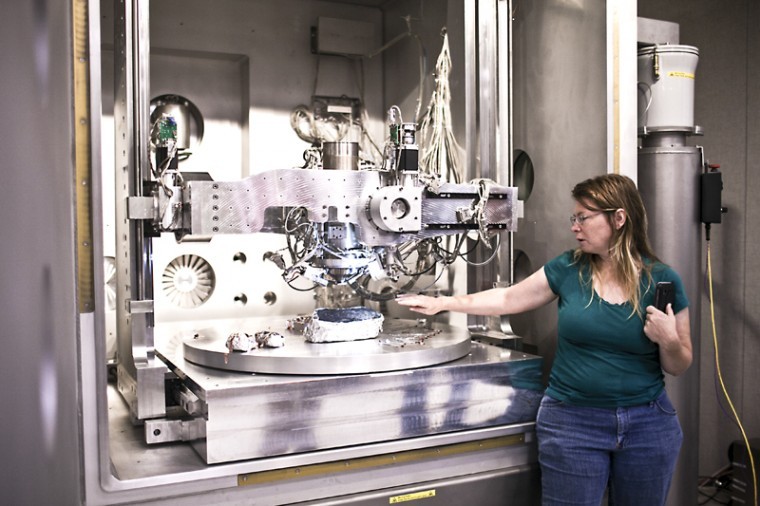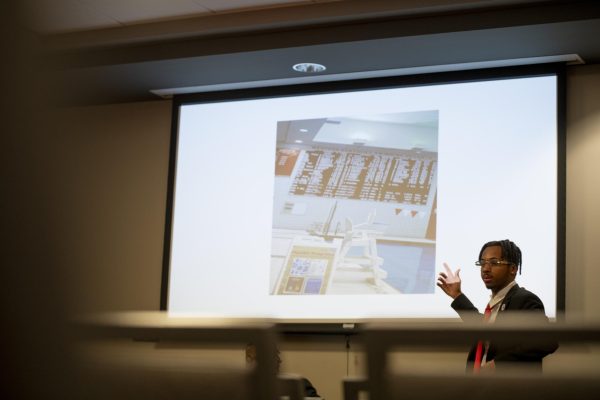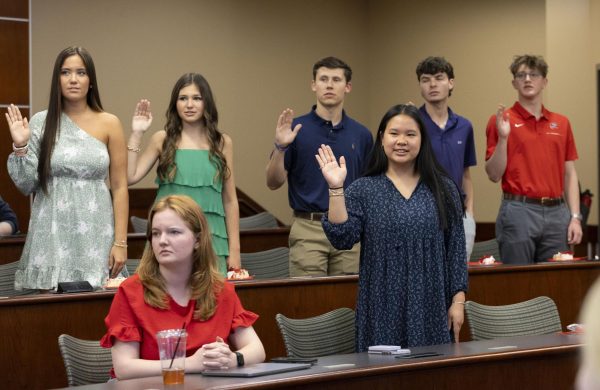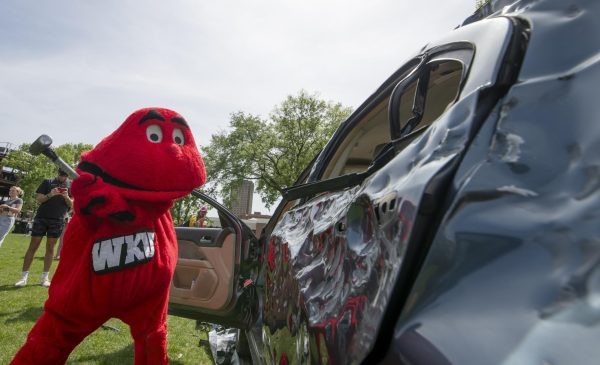NKU professor studies dinosaur fossils at WKU
September 28, 2012
Dinosaurs have invaded WKU’s campus.
A professor from Northern Kentucky University has brought fossils from the Jurassic era to be studied at the NOVA Center at WKU using the Large Chamber Scanning Electron Microscope (LC-SEM).
Janet Bertog, a professor at NKU, and Edward Kintzel, director of the NOVA Center, are studying the Jurassic era dinosaur bones, along with one mammal from that era.
“The mammal is pretty significant because Jurassic mammals are pretty poorly known,” Bertog said.
Bertog said one of the bigger bones they are studying is a femur from a sauropod dinosaur.
“We’re looking for evidence of growth rings and trying to see how the diet of the animal changed over time,” Bertog said. “Bones grow in rings just like tree rings.”
Bertog explained if the animal was in an environment where there was a lot of plant material and it could eat really well, the ring during that year would be fairly large.
The bones came from a site in Utah. Bertog takes NKU undergraduates to the site about two weeks in the summer to collect bones and bring them back.
Bertog brought her fossils to WKU because of the LC-SEM. Bertog said it’s the only academically available one in the country.
Because the microscope is big, Bertog and Kintzel can take large samples and examine them without cutting them — which is important because of how rare the fossils are.
“We don’t have to cut a little chunk out of the bone to put it into a regular SEM because we have the ability to put the whole thing in there,” Bertog said.
Bertog will be coming to WKU periodically to use the equipment for about a day at a time. The fossils will remain here until they are done examining them.
Kintzel said they are finding some things they weren’t expecting to see such as a ring-like structure on a dinosaur tooth.
“That’s unexpected, and it’s actually putting out some really interesting results,” Kintzel said.
Kintzel said he and Bertog do not know why the structure is like this yet.
“Right now, we’re looking at what it’s composed of and then trying to figure out if anybody else has seen anything like this as well,” Kintzel said.
Cathleen Webb, the department head of chemistry, is helping with some chemical analysis of the samples. She was Bertog’s initial contact with WKU, as Webb was Bertog’s professor at another university.
They were discussing another research project when Bertog brought up her research with the dinosaur bones.
“And I said, ‘Well, you should consider using the large chamber SEM’, and I described it to her, and that’s where this project came from,” Webb said.
Bertog said the project is close to her heart. “I’ve always been interested in dinosaurs, since third grade.”

























